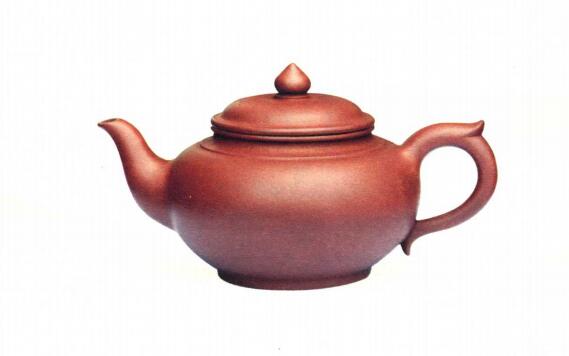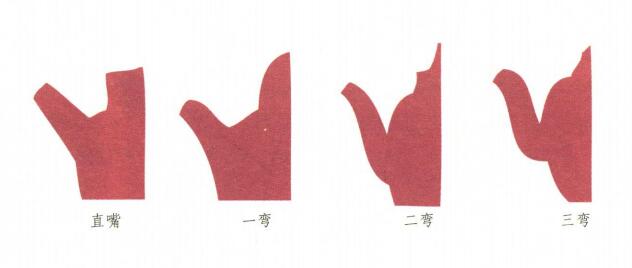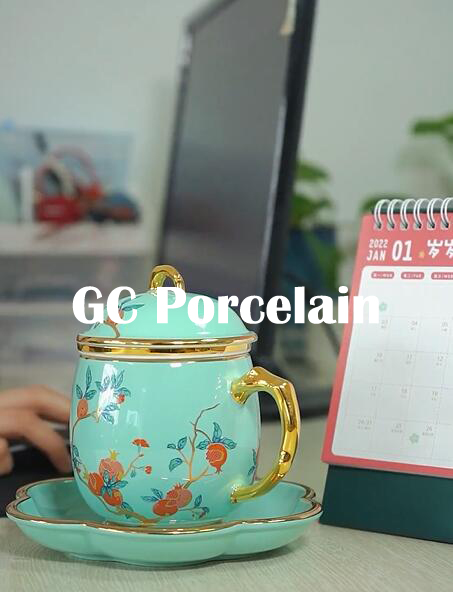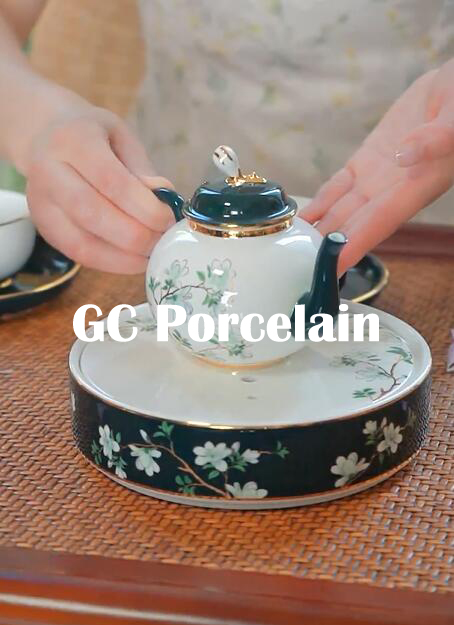QUOTE
Buy teapot according to their own tea drinking habits to choose. For example, the family usually more guests, you have to buy a larger pot, porcelain pots, glass pots can be; If you are accustomed to brewing kung fu tea, then in addition to cups, tea sea, etc., but also to prepare more than two small, medium and small shaped purple clay pots, to facilitate the brewing of different tea; If you like to collect or in order to make their own pots to maintain a better, you have to choose according to personal preferences of a certain master to do in the shape of the pot, clay color, size, decorations, The shape of the bottle, the color of the clay, the size of the bottle, the decoration, the content of the carving, and the strength of the hand to hold it.
What should be the best combination of jugs and cups?
A teapot with five teacups is a natural thing, there is no such thing as a teacup with five teapots. What is the relationship between the teapot and the cup?
The combination of tea sets sold on the market nowadays is usually a pot with four cups, there are also five or six cups, zisha pots have three cups, five cups, etc. A pot with a few cups is determined by the capacity. A pot with a few cups is determined by the capacity of the original pot can be poured exactly four cups, and then poured is the bottom of the tea leaves, exactly five people drinking tea, you have prepared five cups, the cup how to do? Some people say that the water can be refilled, I bought this tea can be refilled several times, the big deal is to make another pot, in fact, this is not very polite. Drinking tea is a matter of etiquette, don't be impolite by ignoring the details. This is a small pot, but a big one is not good either. A big pot, stupid, a few small cups, look not coordinated. So the relationship between the bottle and the cup is very important. First of all, the size and capacity of the bottle must match the size of the cup. Traditionally, the north is used to put a high porcelain pot and five or six cups in a tea tray; in the south of Chaozhou, jar head and other areas used to drink kung fu tea, pomegranate pomegranate big pot and walnut big seven or eight small cups. Secondly, the texture and color should be matched well. Warm and cool colors and different textures can be coordinated to create the perfect tea set.
What's three points, one line, three hills?
When buying a teapot, it is important to know what "three points and one line" and "three mountains" are, which is the main standard to check whether a teapot is qualified or not.
The "three points and one line" refers to a flat view of a bottle's spout, handle, and mouth, all three of which are on a straight line without being crooked or slanted; the "three mountains and one line" refers to removing the cap and inverting the bottle onto a flat surface (preferably on a glass plate), with the spout, mouth, and handle on the same horizontal plane without warping or swaying. The spout, mouth, and handle should all be on the same horizontal plane, without warping or shifting, with particular attention paid to the consistency of the mouth and spout.

Some people may ask, "Can't the three mountains be united?
Can not. There's a physical fact here - the U-tube principle: if you put water in a U-tube with openings at both ends, the height of both sides will always be the same. Teapot is this reason, so if the spout is lower than the mouth of the bottle, before the water in the bottle is full, the water from the spout out. If the spout or handle is higher than the mouth of the pot, it will not be aesthetically pleasing either.
What is a bottle button? How to choose a pot handle?
There is a small bump on the lid of teapot designed to lift the lid, called "Newel", also known as "the", commonly known as "the child". Some bottles do not have a new, only with a rope tied to both sides, called "tie". There is usually a small hole in the top of the bottle, which is used to allow air to circulate inside and outside the bottle, otherwise, if the cap is too tightly closed to the mouth of the bottle, the mouth of the bottle will not be able to pour out water, and the cap will not be able to be opened. To check the tightness of the stopper and the mouth, fill the bottle with water and pour it through the hole in the handle with your finger; if it doesn't flow, it's tight.
The most common shapes are bead shaped, including teardrop shape, button shape, lotus shape and so on. According to the bead shape, there are square, prismatic, chrysanthemum shaped and hollow shapes. Apart from the bead shaped, there are also bridge, flying, pictogram and inlay shaped. The bridge is like a bridge over a river, with the two ends on the lid, and a bridge hole in the middle, and has many different forms; the flying button is usually found on modern bottles; the pictorial button is to make the button in the shape of a beast, a bird, or a flower bud; and the inlaid button is to dig two grooves on the left and right side of the flat lid, so that it can be easily lifted by a finger, for example, the button on the Yangbucket is an inlaid button, commonly known as the "bull's nose". "This is commonly known as the "bull's nose.
Although it is not very conspicuous, but if you compare a bottle to a person, the bottle is one of the five senses - the nose, the pipe air circulation, so it should also be beautiful, and the whole shape of the bottle as a whole. The bottle should be easy to carry, and should be strong. Most importantly, the small hole above must be smooth, and can not be too small, too small, then pouring water when there is a "sudden" sound, a strand of a strand. This is because the small hole is too small, not enough air pressure inside the bottle. Generally small hole diameter of 2 ~ 3 mm is more appropriate.
How to choose a stopper?
There are three types of stoppers: pressed stoppers, inset stoppers, and truncated stoppers. The outer edge of the stopper is pressed against the mouth of the bottle, commonly known as the lip, with the stopper being the upper lip and the mouth the lower lip. In order to prevent the stopper from slipping off the bottle, a supporting wall is made around the part of the stopper that extends into the bottle, called the stopper wall, or stopper foot. "The stopper is embedded in the body of the bottle and, with the exception of the collar, sits on the same plane as the body or in the mouth of the bottle. A truncated stopper is like a piece of round wood cut off with a saw, leaving only a seam between the outer edge of the stopper and the mouth of the bottle, and the body of the bottle in a streamlined shape.
The stopper should be tightly fitted to the mouth of the bottle, so that it opens and closes freely, and the stopper can be gently rotated; the foot of the stopper should be neatly trimmed and smooth at the point where it connects with the mouth of the bottle. The air holes in the stopper should be large on the inside and small on the outside, so that it is less likely to be covered by water vapor, thus facilitating the filling of the tea.

What's the best way to pick a spout?
Many people buy teapots for their texture, color and shape, but few pay attention to the spout. In fact, the spout is an important "organ" of a teapot, and if the bottle is the human nose, the spout is the human mouth and throat. In addition to the style and color of the bottle, it is also important to look at the spout.
Pick a teapot if the spout is not good, there will be some trouble, such as pouring water flow is not shaped, there are splashes of water splash down on the table; after pouring water spout drooling, there are traces of water underneath, put on the table on the table are water; pour the bottle completely, but the pour is not clean, there is still residual water in the bottle. This is because the spout is not properly designed.
The spout of a good bottle is smooth, with a continuous flow of water that is as strong and powerful as a column of water. The water does not disperse or twist, and it rushes into the cup without making any noise; when the water is cut off, it does so swiftly, without drooling, and no residual water remains in the bottle after it has been poured. This means that the water is "well-spoken, clean, and sharp".
According to the requirements of the shape of the bottle, the spout was also designed in four shapes - straight, one-bend, two-bend, and three-bend. In addition to the cylindrical shape, there are other "styles," such as the six-pronged spout of a hexagonal bottle, the spout of a lotus bottle can be a rolled-up lotus leaf, and a peach branch for a shouwu peach bottle.

Why do you think the mouth is the 'throat' of a bottle?
This is because at the base of the spout is the spout, which connects the spout to the body of the pot, much like a "throat". There are usually many small holes in the spout, which can block the flow of tea leaves and act as a filter. Open the lid to see if the holes on the inside of the pot are clear.
How to choose a handle?
There are three basic types of handles: end handles, horizontal handles, and lifting beams, all of which are handles that hold the bottle and are capable of carrying the weight of a full bottle. It is important to be careful when choosing a handle:
Whether the weight of the bottle is appropriate. There is no need for the handle to be too thick to be aesthetically pleasing, or too thin to be sturdy. Depending on the size of your hand and the thickness of your fingers, you may want to consider whether the handle is too tight or too loose. Some small bottles have handles that are too tight for the fingers to reach in, so the only way to pour is to hold the handle between the fingers (the thumb and forefinger pinching the top edge of the handle, and the forefinger pressing on the cap), and see if this is a natural, comfortable, and convenient way of pouring.
The interface between the body of the bottle and the handle is prone to breakage as the clay shrinks, so check for cracks.Whether the weight of the bottle is appropriate. There is no need for the handle to be too thick to be aesthetically pleasing, or too thin to be sturdy. Depending on the size of your hand and the thickness of your fingers, you may want to consider whether the handle is too tight or too loose. Some small bottles have handles that are too tight for the fingers to reach in, so the only way to pour is to hold the handle between the fingers (the thumb and forefinger pinching the top edge of the handle, and the forefinger pressing on the cap), and see if this is a natural, comfortable, and convenient way of pouring.
The interface between the body of the bottle and the handle is prone to breakage as the clay shrinks, so check for cracks.
What do I need to know about picking a bottle?
The body of a bottle comes in all shapes and sizes, but it is made up of three main parts: the stopper, the belly, and the foot. When choosing a bottle, it is important to be satisfied with the style and capacity of the bottle.
Knock gently on the body of the bottle, to see whether the degree of firing to meet the requirements. The sound is too harsh, sharp, generally indicates that the firing is too much, so the bottle is easy to crack; sound is too low boring generally indicates that the fire is not enough, easy to seepage. And then carefully check the body of the bottle there are no air bubbles and defects.
Place the bottle on a flat surface and press gently on each part to see if the body is stable. There are many different types of feet, so look for damage or differences in height. If you like the decoration or the engraving on the bottle, check to see if you like it.
How to choose a Purple Clay Pot?
Purple clay bottles are for tea with, first of all, the function should be good, hold in the hand to be stable, comfortable, in line with the "three points, one line", "three mountains," the requirements (previously mentioned). To summarize, the choice of a bottle requires attention to the following ten aspects of the problem:
Knock on the pot and listen to the sound. If the sound is dull, it has not been burned enough; if it is sharp, it has been burned too much. If it is "raw", it will absorb a lot of water and seep through; if it is too "cooked", it will break easily.
Place the pot on the table and press the corners to see if it is moving. Check whether the stopper and mouth are tight and firm, if too loose, it is not good, can not keep the water temperature, tea aroma, such as a little tight, you can use the diamond sand to grind yourself, the best ning tight, not loose. The method of testing, as mentioned earlier, can be filled with water and then pressed with a finger on the air holes, such as pouring no water is a good bottle, known as the "forbidden water".
To check for spattering and swirling of the water from the spout, hold the bottle suddenly flat while pouring about 30 centimeters up, and look under the spout to see if there is any drooling or beading, or if there is any of the above, it is a defective bottle.
After filling the bottle, one hand should be able to hold the handle without feeling uncomfortable or strained. The capacity of the bottle varies, and should be chosen according to your own drinking habits and the amount of strength you have to hold the bottle. Open the lid to see if the interior is clean and smooth. There are several different types of holes in the body of the bottle, including a single hole, a porous mesh, and a spherical mesh. If the holes are too small or too thick, the water will flow slowly, and if they are too thick, the tea leaves will flow out; if they are mesh, see if they are too dense or too thick, and if they are too dense or too thick, they will not be easy to clean.
- Look at the quality and color of the clay to see if it is satisfactory.
- See if the styling is satisfactory.
- Look to see if you like the pattern, the decoration, and the content and technique of the inscription.
- You can place it within a certain distance, are you satisfied with the quality of it.
If you are satisfied with all ten of these aspects, you have chosen a good bottle. To summarize, there are five words: "clay, shape, workmanship, mark, and use".
No matter what the shape of the pot, the purpose of the pot is to make tea, and the first and foremost requirement is practicality. On the basis of practicality, according to their own preferences to choose a different shape, gas, God and capacity of the bottle. The most important one is to see whether the real purple sand clay products, if not good purple sand clay, then the above mentioned is null and void, because it does not have the advantages of purple sand bottles.
Then how to see if it is good Zisha clay? Here are a few tips:
- First, look at the texture of real alabaster clay fired alabaster bottles like bean sand, and then fine alabaster look still have a semi-suspension of particles, touch not too smooth, but also will not be prickly; ordinary clay fired after touching the astringent, and doped with chemical raw materials and overly smooth.
- Second, the weight of the bottle in the hand, the real purple sand clay is lighter, while the ordinary clay is heavier. This is because the density is different, the real purple sand clay after firing will form pores in the structure of the inner wall, so the density is slightly smaller, slightly lighter in the hand.
- Third, listen to the sound of alabaster after sintering the surface will naturally form a layer of plasma skin, not leakage but breathable, knocking up the sound of porcelain that is not so crisp, but also not boring, and ordinary clay sound boring.
If you have any questions or need to custom dinnerware service, please contact our Email:info@gcporcelain.com for the most thoughtful support!






